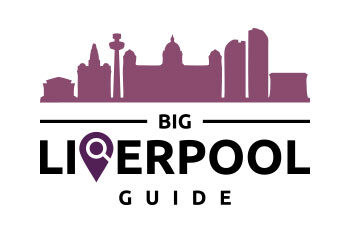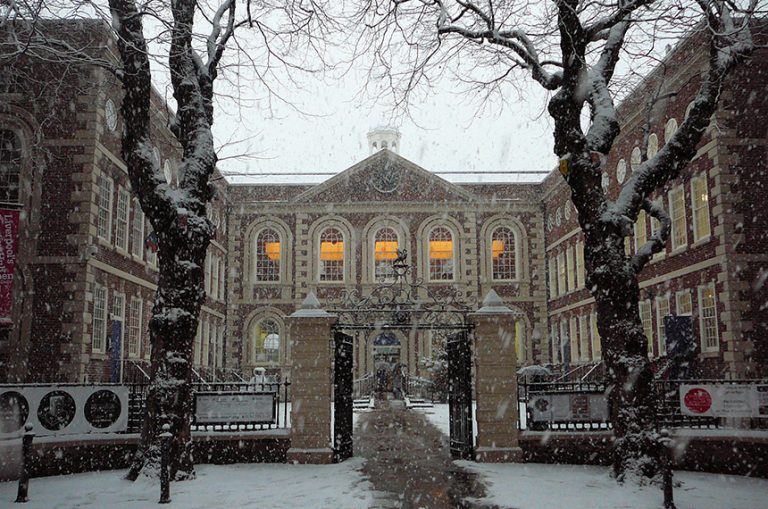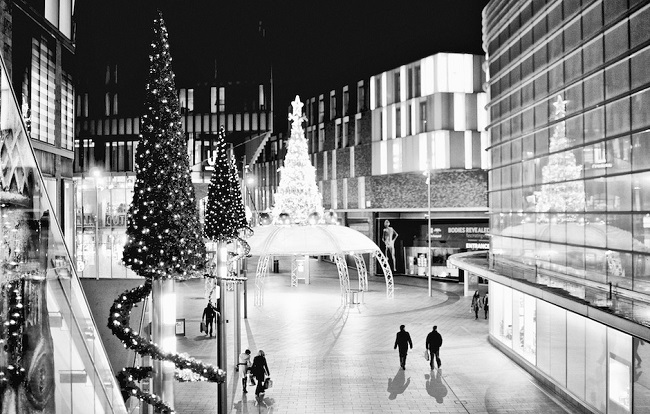Historic Photos of the Liverpool Blitz

Historic Photos of the Liverpool Blitz
Liverpool was essential to the Second World War effort, as the city, at the time, offered the largest port on the west coast. The Liverpool Blitz resulted in the death of 4,000 people from the Merseyside area, with the city’s death toll second only to London.
In addition to offering the largest port that offered a main link to North America, the Battle of the Atlantic was fought and won in Liverpool. As well as providing anchorage for naval ships, Liverpool’s port quays and dockers also handled 90% of Britain’s war materials from overseas. North American supplies were also transported to the city to aid the country’s war effort. To hide how much damage had been inflicted upon the city’s docks, the government withheld bombing reports from the media.
We have therefore chosen to take a look back at such a significant part of Liverpool’s history.
Liverpool’s Overhead Railway

Source: www.merseyside.police.uk
Here locals explore the rubble following the bombing of Liverpool’s Overhead Railway. The date is unknown.
Many children were evacuated from Liverpool to smaller nearby towns or rural areas in North Wales and Cheshire, which was seen as a pre-emptive measure at the start of the war in September 1939. However, less than one year later, the first major air raid of the city occurred on the night of 28th August 1940, with 160 bombers attacking Liverpool. Their assault continued for the next three nights, with 50 raids taking place on the city over the following three months.
Walton

source: liverpoolblitz.wordpress.com
The above photo was taken following bombings on Walton’s County Road. On 18th September, 22 Walton Gaol inmates were killed when bombs demolished a prison wing.
May Blitz 1941
The first bomb of the May Blitz 1941 struck Seacombe, Wallasey, Wirral, at 10.15pm on 1st May. 681 bombers attacked the city over an eight day period from 1st to 8th May, dropping 2,315 high explosive bombs down on the city.
Many of the city’s biggest landmarks were damaged during the attack, with a high explosive bomb hitting Liverpool Cathedral, piercing the roof of the south-east transept and shattering many of the stained glass windows.

Lewis’s department store had been crowded with shoppers on the day of 3rd May 1941; however, the building was destroyed by the night, leaving just a shell in its wake, pictured above.
On 5th May 1941, The Times reported “The German’s stated Saturday night’s attack on Liverpool was one of the heaviest ever made by their air force on Britain.”
The German’s air assault later turned towards the Soviet Union, with the final air raid on Liverpool taking place on 10th January 1942.

The May Blitz 1941 resulted in half of the docks being put out of action, the closure of 500 roads and damage to railways, tramlines, 700 water mains and 80 sewers. Gas, electricity and telephone services were also badly damaged.
On the 3rd and 4th May, the fire brigade attended to 400 fires, whilst 9,000 workers from outside Liverpool and 2,700 troops removed debris from the city streets.
Housing

Source: www.liverpoolblitz70.co.uk
Bootle suffered significant damage during WWII’s May Blitz 1941, as attacks demolished 6,500 homes, with another 190,000 homes damaged. The Blitz resulted in 51,000 left, with 25,000 of those people hailing from Bootle.
The above photo was taken of the Stanley Road shelter, which was full to capacity at the time. Survivors climbed over the emergency escape hatches; however, many people sadly lost their lives. Approximately 409 people died in Bootle as a result of the Liverpool Blitz.
Referring to the tape people placed on windows to prevent flying glass, Lord Haw said to Bootle’s residents: “The kisses on your windows won’t help you”.

Source: www.merseyside.police.uk
Here a police officer inspects an unexploded bomb in a back garden.

Source: www.merseyside.police.uk
WW2 officers hose down the smouldering shell of a factory damaged during an air raid.
Landmarks

Source: www.merseyside.police.uk
The bells were removed for safety from the Church of Our Lady and Saint Nicholas, but were never rehung. The main body of the church was destroyed by a fire following a German air raid on 21st December 1940, with the damage shown above. The church was rebuilt in 1949.
Custom House

Source: www.liverpoolremembrance.weebly.com
The Blitz unfortunately resulted in the loss of one of the city’s finest buildings, Custom House, which was often referred to as the ‘Fourth Grace’. Custom House was controversially demolished in 1948, with many arguing the building could have been saved. Here is the shell of Custom House in 1947, just one year before the building was demolished.
Liverpool Anglican Cathedral

source: www.liverpoolblitz70.co.uk
While the bombers targeted the city’s docks, factories and railways during the May Blitz 1941, the air assault caused damage to the Liverpool Anglican Cathedral when a German bomb bounced off the roof and exploded outside, destroying 23 windows and many neighbouring houses.
The World Museum

Source: beautybellezzabeaute.com
While much of the World Museum’s collections were moved to less vulnerable locations during WWII, the building itself was struck by German firebombs. The photo above shows the bombed out horseshoe gallery.
Many people approached the National Museums Liverpool following the Second World War, hoping to record their experiences as part of history. One woman visited the museum to record her testimony 60 years after the event, as she struggled to talk about her ordeal without breaking down. Her story became one of more than 60 accounts that were part of the Spirit of the Blitz exhibition.
St Luke’s Church (The Bombed-Out Church)

St Luke’s Church, affectionately known as The Bombed Out Church by locals, was destroyed by an incendiary bomb on 5th May 1941. Following the attack, the church was gutted but remained standing.
The church stands to this very day as a reminder of the shocking attack and loss of life Liverpool endured during the Second World War. It also serves as a building of remembrance, honouring the thousands of men, women and children who tragically died as a result of the Liverpool Blitz.

The above photos show St Luke’s Church following the air assault and the stunning ruin that stands today.
While the city might have been shaken considerably during the attacks, Liverpool residents proved their resilience in the face of adversity, picking the city up and moving on from the tragedy that struck during the Second World War.
Prime Minister Winston Churchill later praised the strength of Liverpudlians, stating: “I see the damage done by the enemy attacks, but I also see the spirit of an unconquered people.”


